Michael Hersche
IBM Research - Zurich, ETH Zurich
Structured Sparse Transition Matrices to Enable State Tracking in State-Space Models
Sep 26, 2025Abstract:Modern state-space models (SSMs) often utilize transition matrices which enable efficient computation but pose restrictions on the model's expressivity, as measured in terms of the ability to emulate finite-state automata (FSA). While unstructured transition matrices are optimal in terms of expressivity, they come at a prohibitively high compute and memory cost even for moderate state sizes. We propose a structured sparse parametrization of transition matrices in SSMs that enables FSA state tracking with optimal state size and depth, while keeping the computational cost of the recurrence comparable to that of diagonal SSMs. Our method, PD-SSM, parametrizes the transition matrix as the product of a column one-hot matrix ($P$) and a complex-valued diagonal matrix ($D$). Consequently, the computational cost of parallel scans scales linearly with the state size. Theoretically, the model is BIBO-stable and can emulate any $N$-state FSA with one layer of dimension $N$ and a linear readout of size $N \times N$, significantly improving on all current structured SSM guarantees. Experimentally, the model significantly outperforms a wide collection of modern SSM variants on various FSA state tracking tasks. On multiclass time-series classification, the performance is comparable to that of neural controlled differential equations, a paradigm explicitly built for time-series analysis. Finally, we integrate PD-SSM into a hybrid Transformer-SSM architecture and demonstrate that the model can effectively track the states of a complex FSA in which transitions are encoded as a set of variable-length English sentences. The code is available at https://github.com/IBM/expressive-sparse-state-space-model
Can Large Reasoning Models do Analogical Reasoning under Perceptual Uncertainty?
Mar 14, 2025Abstract:This work presents a first evaluation of two state-of-the-art Large Reasoning Models (LRMs), OpenAI's o3-mini and DeepSeek R1, on analogical reasoning, focusing on well-established nonverbal human IQ tests based on Raven's progressive matrices. We benchmark with the I-RAVEN dataset and its more difficult extension, I-RAVEN-X, which tests the ability to generalize to longer reasoning rules and ranges of the attribute values. To assess the influence of visual uncertainties on these nonverbal analogical reasoning tests, we extend the I-RAVEN-X dataset, which otherwise assumes an oracle perception. We adopt a two-fold strategy to simulate this imperfect visual perception: 1) we introduce confounding attributes which, being sampled at random, do not contribute to the prediction of the correct answer of the puzzles and 2) smoothen the distributions of the input attributes' values. We observe a sharp decline in OpenAI's o3-mini task accuracy, dropping from 86.6% on the original I-RAVEN to just 17.0% -- approaching random chance -- on the more challenging I-RAVEN-X, which increases input length and range and emulates perceptual uncertainty. This drop occurred despite spending 3.4x more reasoning tokens. A similar trend is also observed for DeepSeek R1: from 80.6% to 23.2%. On the other hand, a neuro-symbolic probabilistic abductive model, ARLC, that achieves state-of-the-art performances on I-RAVEN, can robustly reason under all these out-of-distribution tests, maintaining strong accuracy with only a modest reduction from 98.6% to 88.0%. Our code is available at https://github.com/IBM/raven-large-language-models.
On the Expressiveness and Length Generalization of Selective State-Space Models on Regular Languages
Dec 26, 2024



Abstract:Selective state-space models (SSMs) are an emerging alternative to the Transformer, offering the unique advantage of parallel training and sequential inference. Although these models have shown promising performance on a variety of tasks, their formal expressiveness and length generalization properties remain underexplored. In this work, we provide insight into the workings of selective SSMs by analyzing their expressiveness and length generalization performance on regular language tasks, i.e., finite-state automaton (FSA) emulation. We address certain limitations of modern SSM-based architectures by introducing the Selective Dense State-Space Model (SD-SSM), the first selective SSM that exhibits perfect length generalization on a set of various regular language tasks using a single layer. It utilizes a dictionary of dense transition matrices, a softmax selection mechanism that creates a convex combination of dictionary matrices at each time step, and a readout consisting of layer normalization followed by a linear map. We then proceed to evaluate variants of diagonal selective SSMs by considering their empirical performance on commutative and non-commutative automata. We explain the experimental results with theoretical considerations. Our code is available at https://github.com/IBM/selective-dense-state-space-model.
Towards Learning to Reason: Comparing LLMs with Neuro-Symbolic on Arithmetic Relations in Abstract Reasoning
Dec 07, 2024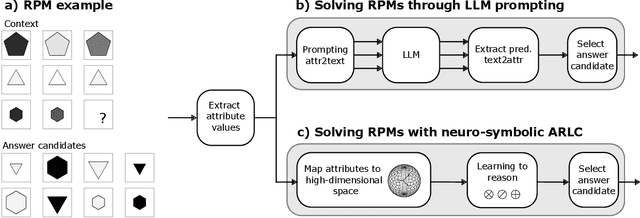
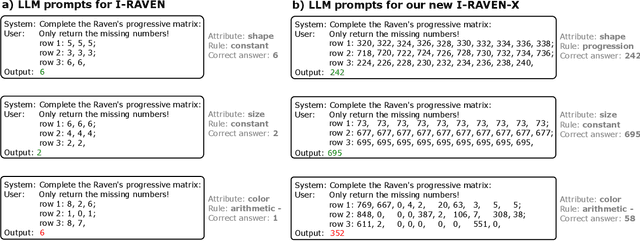

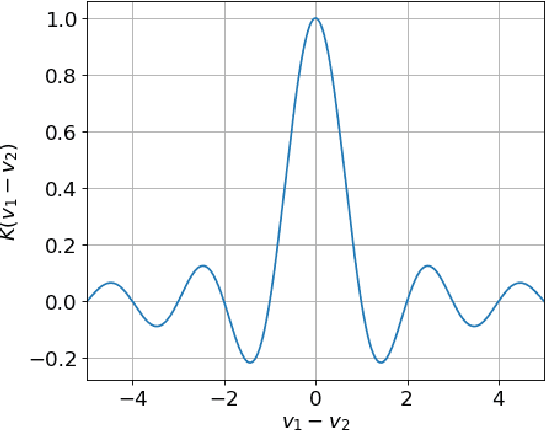
Abstract:This work compares large language models (LLMs) and neuro-symbolic approaches in solving Raven's progressive matrices (RPM), a visual abstract reasoning test that involves the understanding of mathematical rules such as progression or arithmetic addition. Providing the visual attributes directly as textual prompts, which assumes an oracle visual perception module, allows us to measure the model's abstract reasoning capability in isolation. Despite providing such compositionally structured representations from the oracle visual perception and advanced prompting techniques, both GPT-4 and Llama-3 70B cannot achieve perfect accuracy on the center constellation of the I-RAVEN dataset. Our analysis reveals that the root cause lies in the LLM's weakness in understanding and executing arithmetic rules. As a potential remedy, we analyze the Abductive Rule Learner with Context-awareness (ARLC), a neuro-symbolic approach that learns to reason with vector-symbolic architectures (VSAs). Here, concepts are represented with distributed vectors s.t. dot products between encoded vectors define a similarity kernel, and simple element-wise operations on the vectors perform addition/subtraction on the encoded values. We find that ARLC achieves almost perfect accuracy on the center constellation of I-RAVEN, demonstrating a high fidelity in arithmetic rules. To stress the length generalization capabilities of the models, we extend the RPM tests to larger matrices (3x10 instead of typical 3x3) and larger dynamic ranges of the attribute values (from 10 up to 1000). We find that the LLM's accuracy of solving arithmetic rules drops to sub-10%, especially as the dynamic range expands, while ARLC can maintain a high accuracy due to emulating symbolic computations on top of properly distributed representations. Our code is available at https://github.com/IBM/raven-large-language-models.
On the Role of Noise in Factorizers for Disentangling Distributed Representations
Nov 30, 2024Abstract:To efficiently factorize high-dimensional distributed representations to the constituent atomic vectors, one can exploit the compute-in-superposition capabilities of vector-symbolic architectures (VSA). Such factorizers however suffer from the phenomenon of limit cycles. Applying noise during the iterative decoding is one mechanism to address this issue. In this paper, we explore ways to further relax the noise requirement by applying noise only at the time of VSA's reconstruction codebook initialization. While the need for noise during iterations proves analog in-memory computing systems to be a natural choice as an implementation media, the adequacy of initialization noise allows digital hardware to remain equally indispensable. This broadens the implementation possibilities of factorizers. Our study finds that while the best performance shifts from initialization noise to iterative noise as the number of factors increases from 2 to 4, both extend the operational capacity by at least 50 times compared to the baseline factorizer resonator networks. Our code is available at: https://github.com/IBM/in-memory-factorizer
Terminating Differentiable Tree Experts
Jul 02, 2024

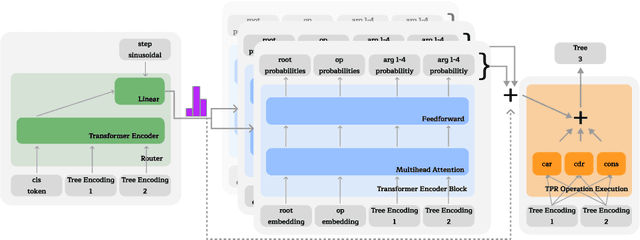

Abstract:We advance the recently proposed neuro-symbolic Differentiable Tree Machine, which learns tree operations using a combination of transformers and Tensor Product Representations. We investigate the architecture and propose two key components. We first remove a series of different transformer layers that are used in every step by introducing a mixture of experts. This results in a Differentiable Tree Experts model with a constant number of parameters for any arbitrary number of steps in the computation, compared to the previous method in the Differentiable Tree Machine with a linear growth. Given this flexibility in the number of steps, we additionally propose a new termination algorithm to provide the model the power to choose how many steps to make automatically. The resulting Terminating Differentiable Tree Experts model sluggishly learns to predict the number of steps without an oracle. It can do so while maintaining the learning capabilities of the model, converging to the optimal amount of steps.
Towards Learning Abductive Reasoning using VSA Distributed Representations
Jun 27, 2024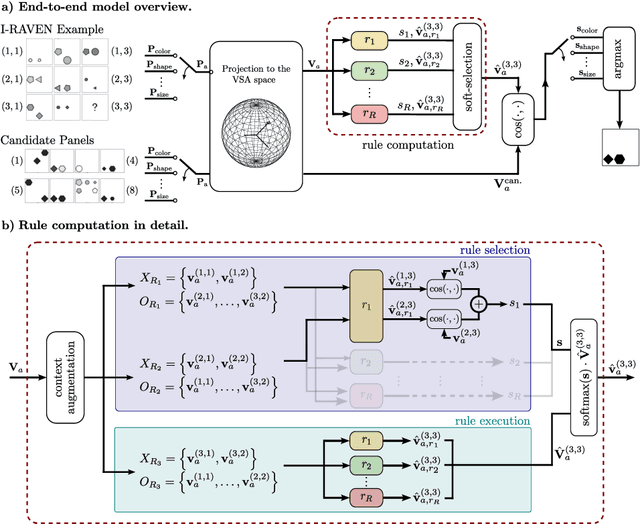


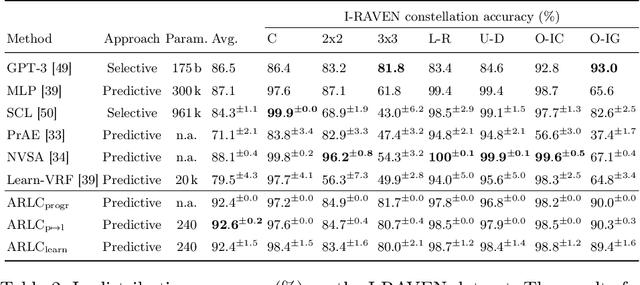
Abstract:We introduce the Abductive Rule Learner with Context-awareness (ARLC), a model that solves abstract reasoning tasks based on Learn-VRF. ARLC features a novel and more broadly applicable training objective for abductive reasoning, resulting in better interpretability and higher accuracy when solving Raven's progressive matrices (RPM). ARLC allows both programming domain knowledge and learning the rules underlying a data distribution. We evaluate ARLC on the I-RAVEN dataset, showcasing state-of-the-art accuracy across both in-distribution and out-of-distribution (unseen attribute-rule pairs) tests. ARLC surpasses neuro-symbolic and connectionist baselines, including large language models, despite having orders of magnitude fewer parameters. We show ARLC's robustness to post-programming training by incrementally learning from examples on top of programmed knowledge, which only improves its performance and does not result in catastrophic forgetting of the programmed solution. We validate ARLC's seamless transfer learning from a 2x2 RPM constellation to unseen constellations. Our code is available at https://github.com/IBM/abductive-rule-learner-with-context-awareness.
12 mJ per Class On-Device Online Few-Shot Class-Incremental Learning
Mar 12, 2024



Abstract:Few-Shot Class-Incremental Learning (FSCIL) enables machine learning systems to expand their inference capabilities to new classes using only a few labeled examples, without forgetting the previously learned classes. Classical backpropagation-based learning and its variants are often unsuitable for battery-powered, memory-constrained systems at the extreme edge. In this work, we introduce Online Few-Shot Class-Incremental Learning (O-FSCIL), based on a lightweight model consisting of a pretrained and metalearned feature extractor and an expandable explicit memory storing the class prototypes. The architecture is pretrained with a novel feature orthogonality regularization and metalearned with a multi-margin loss. For learning a new class, our approach extends the explicit memory with novel class prototypes, while the remaining architecture is kept frozen. This allows learning previously unseen classes based on only a few examples with one single pass (hence online). O-FSCIL obtains an average accuracy of 68.62% on the FSCIL CIFAR100 benchmark, achieving state-of-the-art results. Tailored for ultra-low-power platforms, we implement O-FSCIL on the 60 mW GAP9 microcontroller, demonstrating online learning capabilities within just 12 mJ per new class.
Zero-shot Classification using Hyperdimensional Computing
Jan 30, 2024Abstract:Classification based on Zero-shot Learning (ZSL) is the ability of a model to classify inputs into novel classes on which the model has not previously seen any training examples. Providing an auxiliary descriptor in the form of a set of attributes describing the new classes involved in the ZSL-based classification is one of the favored approaches to solving this challenging task. In this work, inspired by Hyperdimensional Computing (HDC), we propose the use of stationary binary codebooks of symbol-like distributed representations inside an attribute encoder to compactly represent a computationally simple end-to-end trainable model, which we name Hyperdimensional Computing Zero-shot Classifier~(HDC-ZSC). It consists of a trainable image encoder, an attribute encoder based on HDC, and a similarity kernel. We show that HDC-ZSC can be used to first perform zero-shot attribute extraction tasks and, can later be repurposed for Zero-shot Classification tasks with minimal architectural changes and minimal model retraining. HDC-ZSC achieves Pareto optimal results with a 63.8% top-1 classification accuracy on the CUB-200 dataset by having only 26.6 million trainable parameters. Compared to two other state-of-the-art non-generative approaches, HDC-ZSC achieves 4.3% and 9.9% better accuracy, while they require more than 1.85x and 1.72x parameters compared to HDC-ZSC, respectively.
Probabilistic Abduction for Visual Abstract Reasoning via Learning Rules in Vector-symbolic Architectures
Jan 29, 2024



Abstract:Abstract reasoning is a cornerstone of human intelligence, and replicating it with artificial intelligence (AI) presents an ongoing challenge. This study focuses on efficiently solving Raven's progressive matrices (RPM), a visual test for assessing abstract reasoning abilities, by using distributed computation and operators provided by vector-symbolic architectures (VSA). Instead of hard-coding the rule formulations associated with RPMs, our approach can learn the VSA rule formulations (hence the name Learn-VRF) with just one pass through the training data. Yet, our approach, with compact parameters, remains transparent and interpretable. Learn-VRF yields accurate predictions on I-RAVEN's in-distribution data, and exhibits strong out-of-distribution capabilities concerning unseen attribute-rule pairs, significantly outperforming pure connectionist baselines including large language models. Our code is available at https://github.com/IBM/learn-vector-symbolic-architectures-rule-formulations.
 Add to Chrome
Add to Chrome Add to Firefox
Add to Firefox Add to Edge
Add to Edge